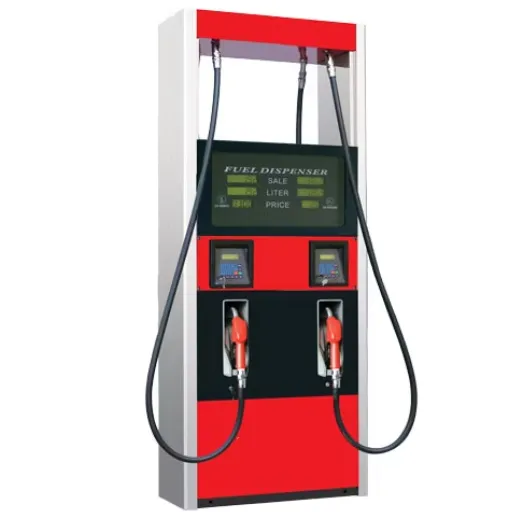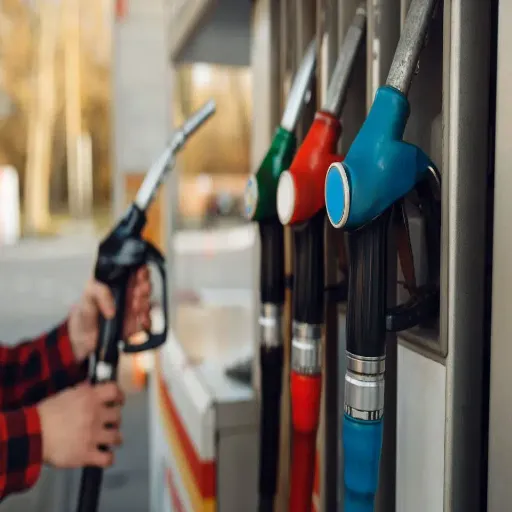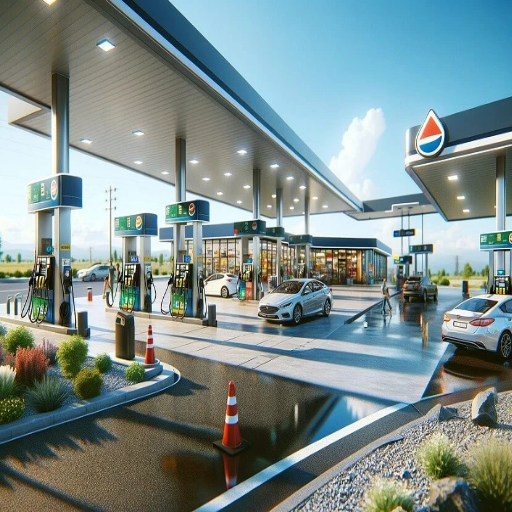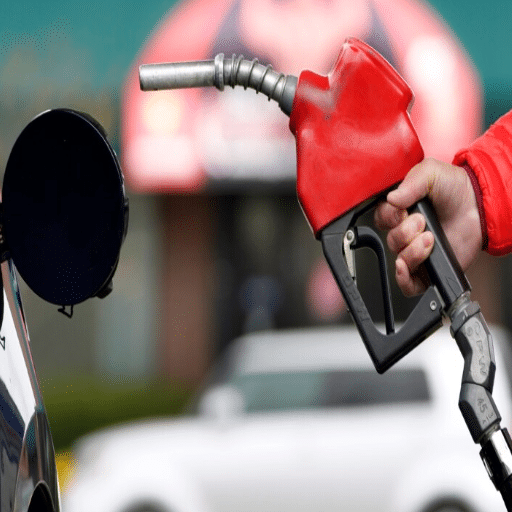Operating a gas station seems like easy money, but it is actually much harder to run profitably. Fuel price fluctuations, operating expenses, and the enhancement of ancillary services like convenience stores all add complexity to the picture. Then, where do gas stations really make their money? This post-in-a-nutshell explores the financial setup of gas stations: relevant key variables affecting earnings and lesser-known revenue streams on which many rely. Should you be considering investing in the industry or sharpening your curiosity on how it works, take a hard look here at what steers profitability in the gas station world.
Understanding Gas Station Revenue
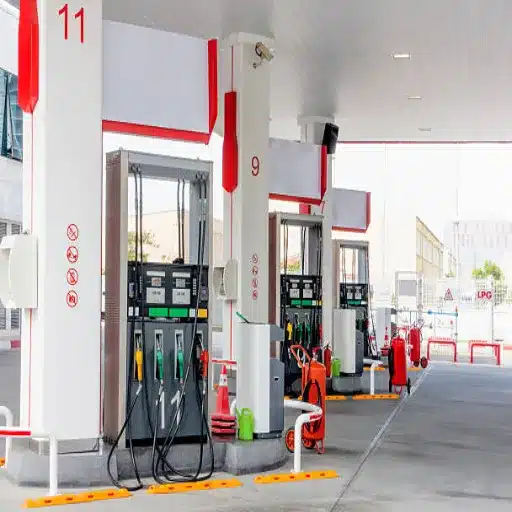
Gas stations primarily generate revenue from selling fuel and items at the convenience store. Gross revenue goes largely to fuel sales, but profit margins are so thin that a few cents per gallon constitute the entire profit after wholesale price, transport, and taxes are taken into account. On the other hand, items at the convenience store sell with much more acceptable profit margins: snacks, beverages, and the like. Additional revenues may be gained through car wash services, lottery ticket sales, and offering air machines, further aiding in balancing out the thin margin of fuel sales. What remains indistinguishable is that the profitability of a gas station lies in this mixture of revenue streams.
Average Profit and Profit Margin
Nationally, their net profit margin is 1.4% to 3%, so that is the amount of money they earn with respect to the sale of fuel. Suppose, for example, that a gas station were selling a gallon of gas; then it would, on average, earn approximately 5 to 10 cents after accounting for costs such as production, operations, and taxes. Said differently, the margin created from fuel sales is often enough to cover the minimum wages, which means, in terms of profitability, fuel sales contribute only a little.
For most gas stations, the major source of profit is their convenience store. Items like snacks, sodas, and necessities usually carry 30% to 60% margin. For instance, the margins on fountain soda can reach 70% and thus constitute a significant source of income for a station.
Other opportunistic services offered mostly on the side include car wash services with a profit margin between 50-60%. Plus, selling lottery tickets keeps steady foot traffic; while not that profitable by themselves, they create an opportunity for customers to pick up some high-margin goods inside. Thus, the combined revenues often make gas stations hybrid businesses, relying on a varied income base for stability and growth.
Revenue Streams for Gas Stations
Over and above fuelling, gas stations make cash from convenience goods and ancillary services. Fuel sales continue to be the biggest revenue generator, and it is not uncommon to see this sector garnering revenues up to 60-70% of the total. In general, the profit margin on fuel sales is relatively low, ranging from about 5 to 10 cents per gallon, after expenses have been calculated. So, the high volume of sales assures steady cash flow.
Convenience Store Operations
The convenience store also plays a vital role as a secondary profit center. Items such as snacks, soft drinks, tobacco, and over-the-counter medicines typically have higher margins, varying anywhere from 25% to 50%. For soft drinks and fresh food items, these could contribute heavily to in-store revenue. Some gas stations have said that these products alone constitute up to 20-30% of non-fuel sales.
Additional Revenue Streams
- Car Washes: Provide the freshest profits, often having a profit margin of over 50%, and loyalty programs tied to car washes encourage repeat business
- Air Pumps and Vacuums: Low-maintenance revenue generators
- ATM Fees: Steady income from transaction fees
- Fast-food Chain Partnerships: Co-promotions with coffee brands, enhancing customer experience while supplementing revenue
Emerging Revenue: EV Charging
Fast-ride EV charging wire-up places are an emerging revenue base for gas stations. The need for charging infrastructure at gas stations is on the rise with the adoption of EVs. Stations with the fast-charging offering can grab a premium on the cost-per-kilowatt-hour from the users while providing an opportunity for these drivers to spend money inside the convenience store while waiting for the charge. Industry reports suggest growing interest in this arena, with projections showing that the EV charging market worldwide will surpass $100 billion by 2030, opening new doors for those forward-looking station owners.
Inevitably, successful gas stations make it big by having an interesting and diverse mix of income sources, hence balancing the traditional fuel sales with the changing purchaser needs for profitability and growth.
Factors Affecting Gas Station Profitability
Fuel Price and Margins
Fuel sales, often regarded as low-margin businesses, compete on aggressive pricing to draw in customers. As per recent industry reports, the profit-making margin on fuel sales ranges from 5 to 10 cents for every gallon sold. These margins may depend largely on the ebbs and flows of crude oil prices, transportation costs, or may even be exacerbated by political events. For instance, during phases of high volatility of oil prices across various markets, it could become somewhat impossible for stations to sustain with fuel sales alone.
Convenience Store Sales
The other sales, namely, the convenience store sales, go a long way in contributing to the revenue of various gas stations. On average, 30% of the gross profits of a gasoline station come from the convenience store. Snacks, beverages, and tobacco are high-margin items – some studies suggest they may account for as much as 60 to 70 percent of the store’s total profits. Increasing product lines with the appropriate marketing strategies can also enhance the success of this revenue stream.
Location and Traffic
The location of the gas stations and the business that calls for it is of utmost importance. For that reason, stations near US highways or in urban centers of the highest traffic volume always tend to outperform those in low-traffic or rural locations. The access to prominent intersections or sites of high visibility invariably registers footfalls, which then translate to higher purchases of fuel and in-store sales.
Alternative Fuels and EV Charging
The alternative fuels and EV charging drive changes in the industry. Studies confirm that the need for EV charging infrastructure is rising at a rapid pace, with the global EV charging market projected to grow at a CAGR of above 25% from the year 2022 until 2030. Early investments in EV charging stations by gas stations will earn them brand recognition in attracting a completely new customer base while creating new revenue streams.
Marketing and Promotions
Marketing can provide a competitive advantage in a market where customer loyalty is becoming so fragmented. Loyalty-based marketing programs, discounts on combined purchases of fuel and convenience store items, and promotions geared to a local market all work to encourage repeat business. Studies have shown that customers shopping in stores that offer store loyalty programs increase their average spend per visit by between 15 and 20%, thereby implementing such initiatives is one of the best ways to boost profitability.
Operational Efficiency
Managing costs such as maintenance, employee wages, and energy consumption is a key to maximizing profitability. For instance, gas stations that install energy-efficient lighting or implement an automated inventory system could be looking at significant cost savings over time. They would also be able to remove waste from daily operations and better allocate resources.
Addressing all of these factors enables gas station operators to respond to market dynamics, enhancing revenues and profitability, thus securing growth in this ever-changing sector.
Gas Prices and Their Impact
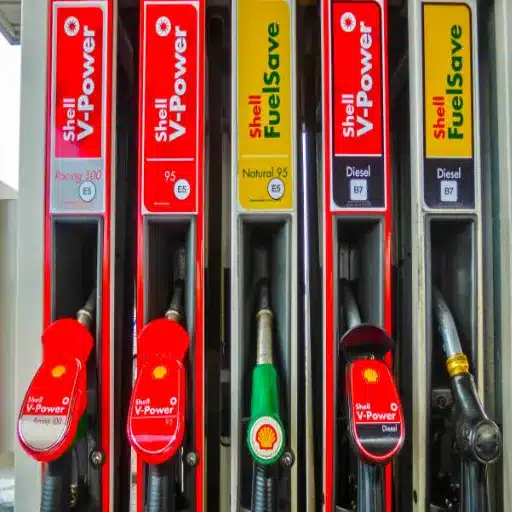
Consumers promptly react to hikes in gasoline prices; however, during price drops, sales are often stimulated further. Higher gas prices cause people to cut back on discretionary travel and resort to buying smaller, fuel-efficient cars or using alternative means of transportation. This increase in fuel costs may raise the cost of production and transportation, eventually up the price of goods and services. On the other hand, when gas prices do the opposite and go down, consumer spending is encouraged, and operational expenses for businesses are reduced, which is very good for economic growth. These ups and downs clearly suggest that gas prices are instrumental in economic decisions as well as in market trends.
How Gas Prices Influence Profit Margins
Gas prices cause every little percentage of profit margin to shrink, with higher emphasis on the transportation and logistics industries. For trucking companies, $0.10 in fuel price constitutes a major percentage of operating expense; so it is for airlines and delivery services. Research indicates that a $0.10 increase in gasoline prices may lead to a 1% increase in transportation costs in some sectors. These production and distribution costs may still encourage a rise in high supply-chain enterprises, forcing the latter to absorb or pass down to the consumers through price increments.
Conversely, lower gas prices increase profit margin, as operating costs come down in many industries. Industries such as retail stand to benefit indirectly as consumers view any savings at the pump as extra disposable income to spend on other goods and services-increasing overall sales. Studies have shown that a small drop in gas prices often leads to an increase in consumer discretionary spending- restaurants, and retail goods- thereby fostering growth for these markets.
Furthermore, energy-intensive manufacturers bear an enormous cost when fuel prices go high, thus assisting in the reallocation of prices when fuel costs drop. Yet, when prices fluctuate erratically, businesses must keep an eye on it since such movements may wipe out the forecast for a budget; hence, adaptability becomes an important value toward ensuring steady profits amid stabilizing fuel costs.
Analyzing the Cost per Gallon of Fuel
| Cost Component | Description | Impact on Price |
|---|---|---|
| Crude Oil | The most important component fluctuates based on international market supply and demand | $85-$90 per barrel average |
| Taxes | Federal, state, and local government taxes | Average 57 cents per gallon in the US |
| Refining Costs | Processing crude oil into gasoline, seasonal blends for the summer months | Higher in summer due to environmental regulations |
| Distribution & Marketing | Transportation and retail markup | Varies by location and supply chain |
While recent averages show the national cost for regular gasoline hovering around the $3.87 mark, the price does vary by state. For example, California ranks high on the price list, where in some regions prices go way above $5.00 per gallon, while Texas, on the other hand, stays much lower on average, roughly at $3.40 per gallon. Keeping an eye on these trends and what causes them is the key for any business or consumer to adjust their budgets all the way through an industry that is very much tied to transportation or logistics.
Trends in Gas Prices and Revenue
Gasoline prices continue to exhibit an exceptionally high level of volatility under the influence of global economic conditions, levels of crude oil production, and geopolitical factors. At the current juncture, with the latest reports, the national average gas price across the United States is hovering around $3.80 per gallon, though regional disparities continue. Hawaii is one of the states to the other extreme, and California also remains pretty expensive, with an average price above $5.00 per gallon; meanwhile, Mississippi and Louisiana report prices around $3.40.
Such disparities drain revenue streams for both the consumer and business. Transport-oriented industries like delivery and logistics services may have to budget for higher operating costs in times of higher prices. On the other hand, energy producers may relish their revenues in higher demand and lower supply conditions. Drivers are also making changes, with many opting for fuel-efficient vehicles or turning to public transit to save some dollars.
Sustaining awareness of these transitions in fuel prices is necessary as part of strategic financial planning for supply chain expenses, while consumers modify household budgets as fuel costs rise.
How Much Do Gas Stations Typically Make?
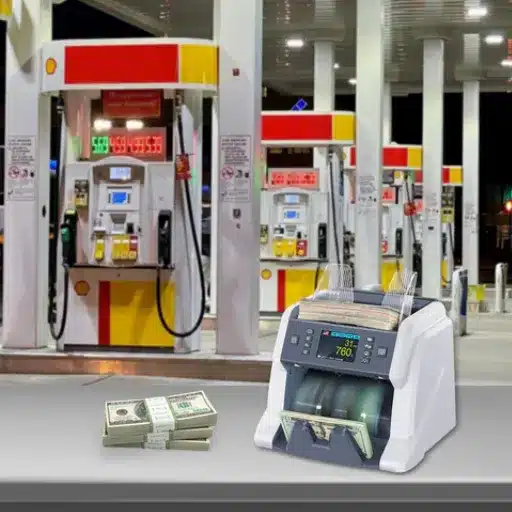
Gasoline sales at a station usually give only modest profits, with a small net margin of 1-3% per gallon after expenses such as the wholesale price of fuel, credit card fees, and operating overhead have been accounted for. The bulk of revenue is derived from convenience-store sales, including food and beverages, and a variety of retail items, usually with a greater profit margin than fuel. This is a necessary diversification to maintain profitability in an industry where fuel sales are tight to begin with.
Average Gas Station Profit Overview
Typical gas stations work with a very fine balance of income streams to stay profitable. Gas stations account for very slim profit margins of just 1-3% per gallon of gasoline sold, mainly due to high crude purchase prices by the refiners and extra costs, like card payment processing fees or transportation costs. Those are among the smallest margins found in any retail sector, making it very difficult for gas stations to rely on gasoline alone to make a decent profit.
To counterbalance, gas stations make heavy use of convenience stores, which supply much of their income. Snacks, beverages, tobacco products, and ready-to-eat foods often present a very healthy margin of 20%-30% or higher, making them an important part of the business. For instance, convenience store sales generate more than 60% of gas station revenues in the U.S., indicating their importance. Added services such as car wash, lottery sales, and mechanical repairs add variety to the revenue sources while offering better margins to compensate for the thin gasoline profits.
In addition, stations pay attention to nice days. The fuel price is shown to influence station traffic to some extent. Weather conditions sometimes tend to have an influence, too—along with changing consumer habits, such as with the rise of electric vehicles. This is why flexibility in the business approach must be a guaranteed way through which revenues will emerge from different sources and well-managed operations.
Annual Revenue Expectations for Station Owners
| Station Type | Annual Revenue Range | Profit Margin | Key Factors |
|---|---|---|---|
| Urban Station | $1,000,000 – $2,000,000+ | 3-5% on fuel, 27-33% on convenience | High traffic, premium location |
| Highway Station | $800,000 – $1,500,000 | 3-5% on fuel, 27-33% on convenience | Traveler traffic, larger purchases |
| Rural Station | $250,000 – $800,000 | 3-5% on fuel, 27-33% on convenience | Lower traffic, community-focused |
The annual revenue of a gas station can vary greatly due to location, services, and market conditions. Generally, a well-managed gas station in the United States earns an annual revenue ranging from $250,000 to $2,000,000, with a margin of 3-5% typically earned on fuel sales alone. Meanwhile, revenues from convenience stores and other service activities of the gas station, such as car washes and mechanical repairs, usually return a much higher margin to the vice owners and greater overall profitability.
For example, convenience store sales at gas stations may make up 30%-40% of their total revenues, with items like snacks, soft drinks, and lottery tickets bringing in substantial cash flow. Furthermore, as consumer preferences quickly evolve toward sustainable energy alternatives, gas stations that provide EV charging points are seeing a jump in revenues year on year.
Another important fact is that location determines revenue potential. The gas stations in a bustling metropolitan location or located along a major highway tend to produce far more income than the gas stations in rural or less busy locations. By diversifying their services and following trends, station owners may make big streams of income and keep their standing in the market.
Comparative Analysis of Gas Station Profits
Different variables evaluate gas station profitability: location-based fuel sales, offerings for the convenience store, and diversification through ancillary services. It is said that most of the gross profit of a gas station does not come from fuel sales alone. Customer sales through convenience offerings such as snacks, soft drinks, and lottery tickets go a long way in contributing toward overall earnings. Low-profit margins are there on fuel sales, averaging about 1.4% to 3% per gallon sold, subject to wholesale pricing and competition.
Conversely, store sales yield gross margins of about 27% to 33%, providing the majority of income for a gas station. These revenues can be augmented by premium services such as car washes, ATM services, or EV charging stations. Car washes, in particular, add a lucrative profit of between $60,000 and $70,000 annually in high-traffic locations.
Gas stations are also supported with heavier flows in urban areas. As an example, revenues for the urban stations generally go beyond $2 million annually, while rural stations average under $1 million. It is the customer volume that drives such demand for the add-on purchases.
The combination of diversified service offerings situated in busy locations leads to profitable outcomes. This brings into focus the interplay of operational strategy alongside location in the evaluation of gas station performance and the profitability potential that the market holds today.
Revenue Streams Beyond Fuel Sales
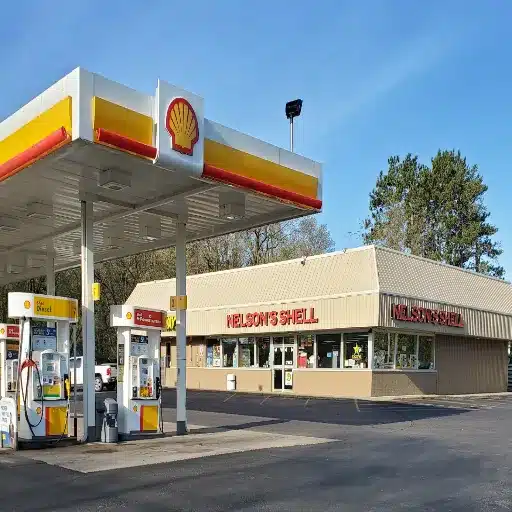
Besides fuel sales, there are convenience store sales, car washes, parking, and food services. Most gas stations house a good-sized convenience store selling snacks, beverages, and sundries, which is a high-margin affair. Car washes, whether sold by time or not, should bring in steady incomes, usually because a bigger one is in town or near an expressway. Attractions such as fast-food chains or in-house food services also tend to draw more customers by adding to their set of services. These additional services are crucial to the overall profitability.
Additional Services and Products Offered
Nowadays, modern convenience stores, especially those at gas stations or travel centers, are getting services into demand through technology and consumer trends. EV charging stations, thus, have come to be the lifeline of service areas for the increasing number of EV owners. Data indicates that the sale of electric vehicles crossed 3 million in 2023 within the United States, showing that charging infrastructure is of prime importance.
- EV Charging Stations: Essential infrastructure for the growing EV market
- Vending Kiosks: High-demand items like electronics, beauty products, and personal care items
- Subscription Car Washes: Monthly flat fee for unlimited or discounted washes, increasing customer retention by 30%
- Fresh Prepared Meals: Healthy snacks and eco-conscious goods catering to changing consumer preferences
Besides, vending kiosks targeting the needs of high-demand items are capturing the radar for electronics, beauty items, or personal care systems. Placed everywhere, coffered with high footfall, these kiosks remain cashless, thereby promoting convenience and efficiency in sales.
Subscription car washes have also become a tool for making profits. The customer pays a flat fee monthly for an unlimited number of washes or discounted car washes, thereby growing revenue and consolidating loyalty. Studies have shown that subscription-based services can increase retention rates of customers by 30%.
Finally, the wellness side of this includes fresh prepared meals, healthy snacks, and eco-conscious goods-remembering the change in preference of consumers toward both health and sustainability. The inclusion of these new-age services and products ensures the upliftment of customer satisfaction and the top-line growth of revenues substantially.
Impact of Gas Prices on Overall Profitability
Fluctuations in gas prices have a huge impact on the whole business’s profitability, especially for industries involving transportation and logistics. With rising gas prices, the operational cost rises, squeezing the amount of profit that can be made. For example, with a 25-cent price increase for fuel per gallon, transportation companies can feel an almost 10% increase in expenditure. Retail businesses are also at the receiving end; accordingly, higher unspecified transportation costs for shipping goods drive up the prices for the consumers, lessening their purchasing power and threatening their sales quantity.
The lower gas prices tend to bring good effects, such as reducing operating costs and putting more free cash in consumers’ pockets to use for spending. Data indicating and corroborating the fact that decreasing gas prices create revenue growth scenarios for businesses are those that reduce prices promptly and optimize the supply chain to reap most of the savings.
Accordingly, they also invest in fuel-efficient technologies and other energy sources like those for electric or hybrid vehicles, turning a blind eye to the hard-rocking declines in fuel costs. Such mitigating strategies can truly bode well for gas-price shift management on the front of ensuring spinning along resiliency and keeping afloat in this turnabout economic environment.
Analyzing the Total Profitability of Gas Station Owners
The profitability of gas station owners depends on numerous factors, such as fuel sales, convenience store sales, location, and market conditions. Generally, fuel sales constitute the major revenue stream of any gas station. Yet gasoline selling profits are slim, usually about 10-15 cents per gallon after operating costs such as transportation, labor, and maintenance have been considered. But most of all, the profitability of some gas stations is supported by the services and products they offer, with the convenience store being a major contributor.
Industry analysis puts convenience store sales, which include sales of snacks, beverages, and other fast-moving consumer goods, at between 35 and 55 percent of a gas station’s profits. Moreover, some stations obtain extra income through car washes, automotive repairs, or ATM fees, all of which are higher-margin activities relative to fuel sales.
Location matters greatly for profitability. A station located in a high-traffic area (e.g., close to a highway or an urban center) tends to generate much more revenue than one situated in a downtown rural area. Conversely, high-traffic generating locations generally entail other costs such as high rent or lease expenses. External economic factors such as the fluctuating prices of crude oil and changes in demand in regional markets significantly affect the overall financial performance of gas stations.
Some renowned strategies go into the pursuits of many gas station owners to maximize the profit in their establishments; these strategies include loyalty programs, value-added partnerships with famous food service brands, and the productivity-gaining application of technology. Technology has come in handy in reducing expenses through self-checkout and the upgrading of fuel pumps, all the meanwhile enhancing the customer experience. Gas station owners remaining competitive in an ever-changing marketplace is another aspect that entails watching and reacting to shifts in consumer behavior.
Strategies to Increase Profitability
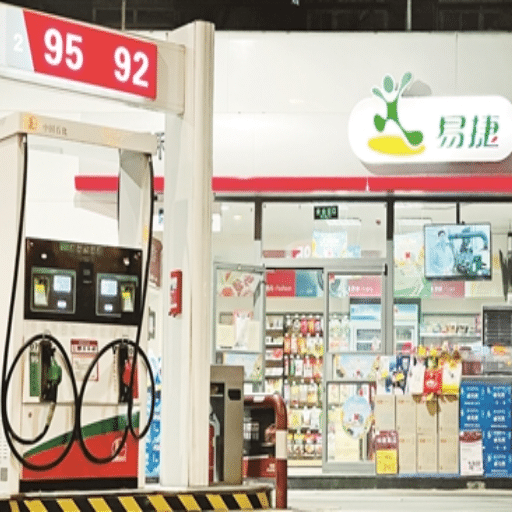
Key Optimization Strategies
- Optimize Pricing: Keep fuel prices under constant review for strategic adjustment to maintain competitiveness whilst protecting healthy margins
- Diversify Revenue Streams: Introduce car wash services or food and beverage offerings, along with selling convenience store items as additional streams of income outside fuel sales
- Implement Loyalty Programs: Create revenue streams through repeat visits by rewarding loyal customers with discounts, points, or rewards
- Focus on Efficiency: Implement new technology, including automated fuel pumps or self-checkout kiosks, to ease operations and cut down on labor costs
- Enhance Customer Experience: Always make sure the facilities are clean, service is welcoming, and keep inventory well-stocked to draw customers in
- Leverage Data Insights: Use POS data in addition to customer feedback to spot trends and align products or services with consumer needs
Gas station owners will thus find profit-making opportunities through these strategizing options while still building for their competition in a tough market.
Diversifying Revenue Streams
Generators must develop various types of additional services and offerings to complement their revenue streams. Among the execution processes involved are:
- Convenience Store Offerings: The expanded offerings of cheap snacks, beverages, groceries, and ready-made food will surely generate extra sales. Associate with hot names in food and beverage to bring in more customers
- Car Wash Services: Having an automated car wash system or manual car wash services actually proves to be a great money-making opportunity and brings repeat customers
- Loyalty Programs: Have your own or associate with existing programs to offer discounts or rewards for beers. This will earn customers’ repeat sales over time
- Food and Beverage Partnerships: The location can hold a quick-service restaurant or coffee shop. Such tie-ups with famous franchises would add more footfall to the location
- Alternative Fuels and EV Charging: Cater to new customer requirements with the installation of EV charging stations and alternative fuel options such as biofuels and CNG
- Seasonal and Local Products: Colors of seasonal merchandise and local handicrafts will surely charm the community and differentiate the station from its competitors
The implementation of these approaches will diversify revenue streams and simultaneously create more rewarding customer experiences to ensure the sustainability and development of the enterprises.
Optimizing Gas Pricing and Sales
I would focus on real-time data for putting price dynamics into gas pricing and sales. Based on market trends, demand, and competition, prices could change. Customer discounts and loyalty programs for repeat customers serve to encourage retail visits. Both promotions and bundled discounts for gas, combined with store sales, create revenue opportunities. I can use these strategies to stay competitive while maximizing profits and keeping my customers happy.
Enhancing Customer Experience and Loyalty
In order to fully deliver a great customer experience in order to generate loyalty, customer interaction should be personalized, easy service delivery should be ensured, and added value should be given. Personalization activities may include the use of customer data to match offers, e.g., recommending related products or sending personalized promotions. Training staff and providing the required technology ensure that customers are well served in a timely, satisfactory manner. Additionally, offering loyalty programs may encourage long-term customer retention since repeat purchases are rewarded with points, special offers, or tiered rewards. Taking customer feedback into account and putting it into practice shows a willingness to improve, slowly developing customer trust and satisfaction. Combining these initiatives with the provision of high-quality and convenient services for customers lays the foundation for long-term relationships.
Summary: Key Takeaways for Gas Station Profitability
- Fuel sales generate 1-3% profit margins but provide steady cash flow
- Convenience store sales contribute 30-60% of total profits, with higher margins
- Location and traffic volume are critical success factors
- Diversified revenue streams are essential for sustainability
- EV charging represents a growing opportunity for forward-thinking owners
- Operational efficiency and customer loyalty programs boost profitability
Reference Sources
Frequently Asked Questions (FAQs)
How Much Profit Does a Gas Station Make Annually?
Annual profits of gas stations can differ immensely with location, competition, and management styles. On average, a gas station makes anything from $30,000 to $100,000 in actual profit in a year. Bigger stations, on the other hand, make higher profits when they add extra services such as convenience store sales and oil changes.
What Is the Average Profit Margin for Gas Stations?
Profit margins at gas stations are generally thin and typically range from 1-3% on the sale of fuel. But big profit margins can be gained through loopholes like selling items at the convenience store, car wash, and small repairs, such as an oil change.
How Do Gas Station Owners Boost Their Profitability?
The owners could increase profitability by sale. Sales from grocery items, use of an inventory management system, and additional services such as oil change and EV charge station can greatly increase revenue and, ultimately, profit margins.
Which Are the Factors That Affect Gas Station Revenues and Profits?
Various factors can influence the revenues and profits of a gas station, such as all kinds of locations, competitors, compliance costs, and the volatile price of fuel. Also, station traffic time and the current ability to adjust fuel prices play a big role in determining the overall profitability of the stations.
Do Gas Stations Make More Profit from Fuel Sales or Additional Services?
Typically, gas stations make big profits from additional services and products rather than from fuel sales. Low margins for fuel sales are overshadowed by very high profits from services such as the car wash, convenience store items, and oil changes for gas station owners.
How Does the Gas Station Industry Compare in Profitability?
Low fuel sale margins seriously threaten the gas station industry; however, those who can evolve to supply goods and services with higher margins can thrive. Business owners who keep an eye on market happenings, such as the recent effects of Russia’s invasion of Ukraine on fuel prices, will certainly be able to steer better through the industry.
What Are the Compliance Costs for Running a Gas Station?
Compliance costs for running a gas station include major outgoings for environmental regulations, safety standards, licensing, etc. The said costs will certainly impact the overall gas station revenue, and thus must be taken into account in the calculations of profitability.
How Can Gas Stations Compete with Other Stations?
Gas stations compete by giving fuel discounts, building loyalty programs, and offering services unique to the station. Establishing a good brand identity and delivering excellent customer service will draw more traffic to the station and, finally, bump revenue and profit margins.



